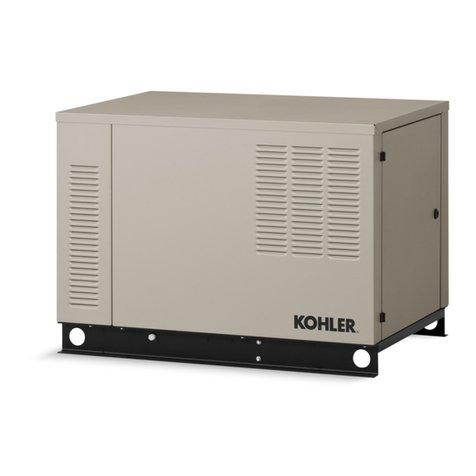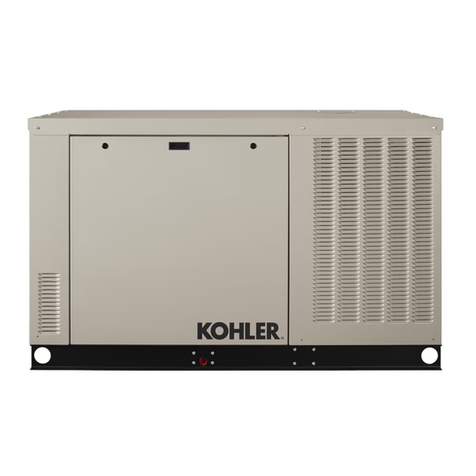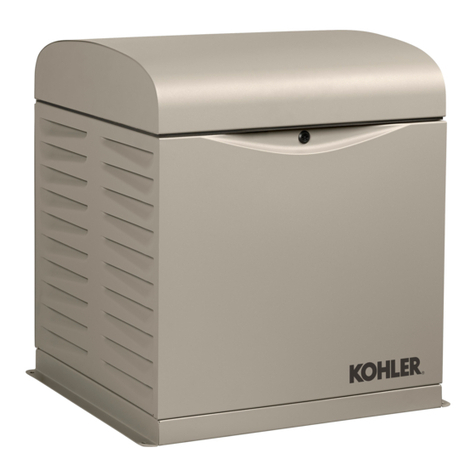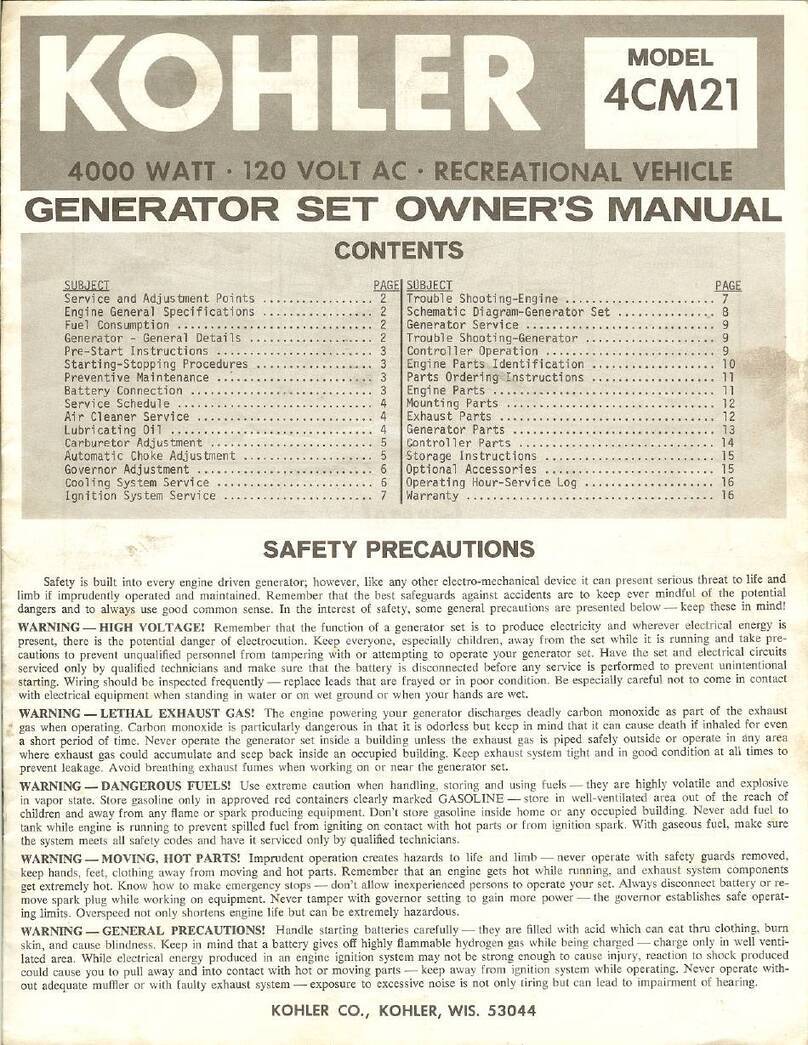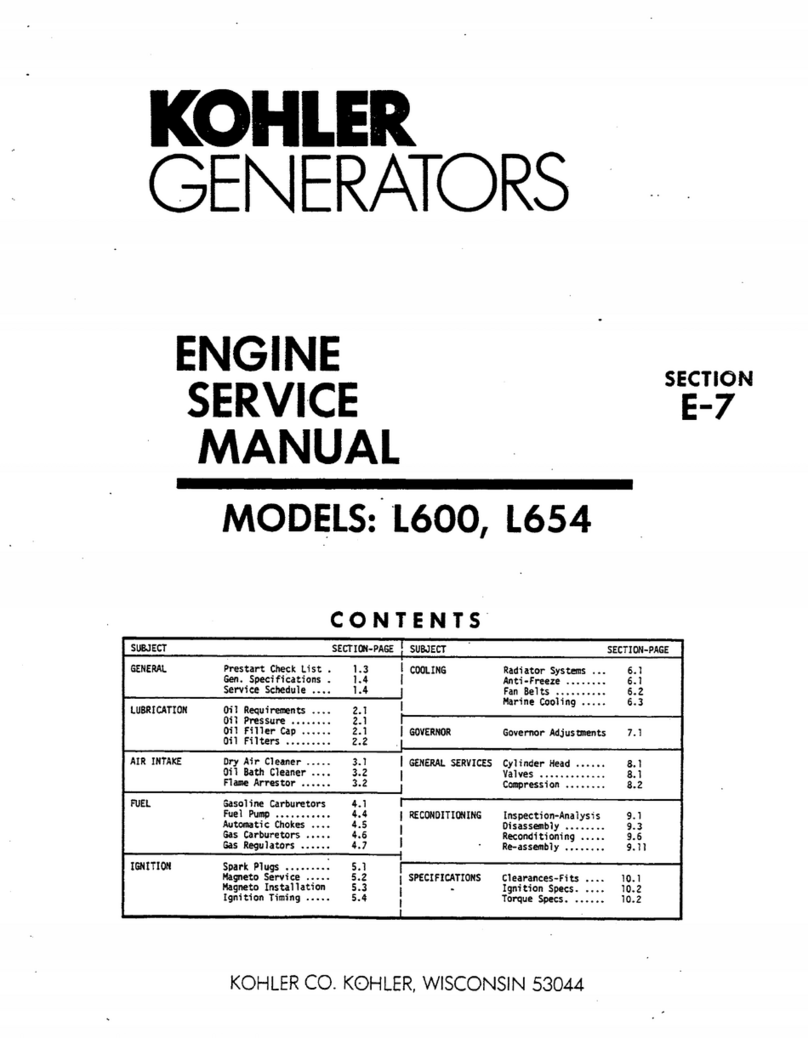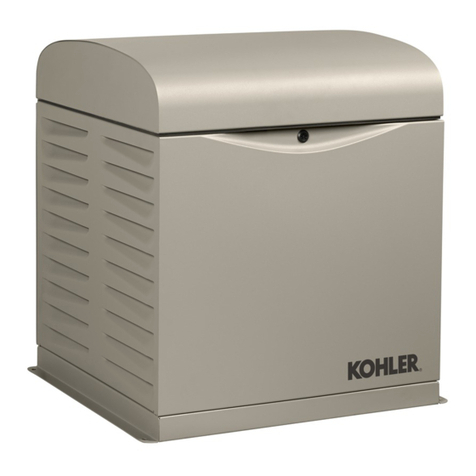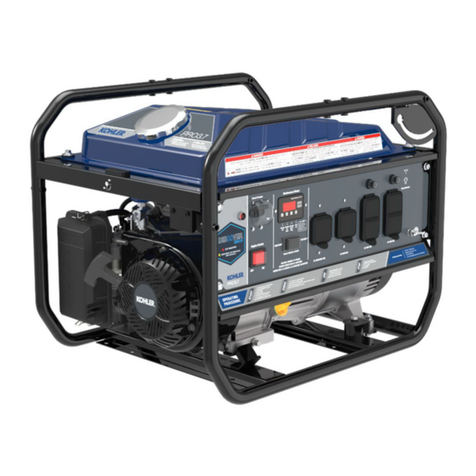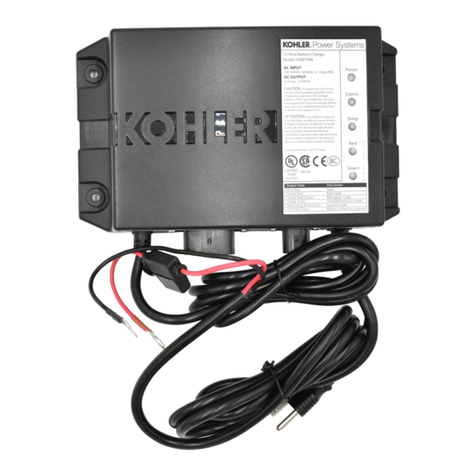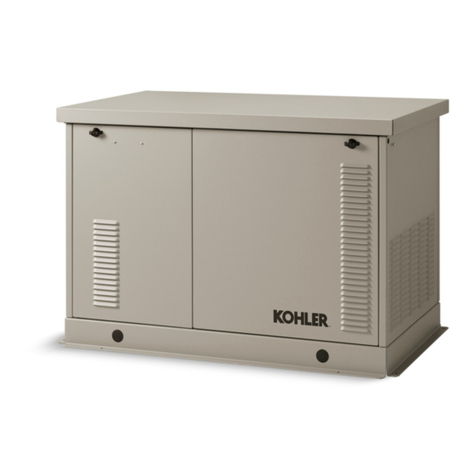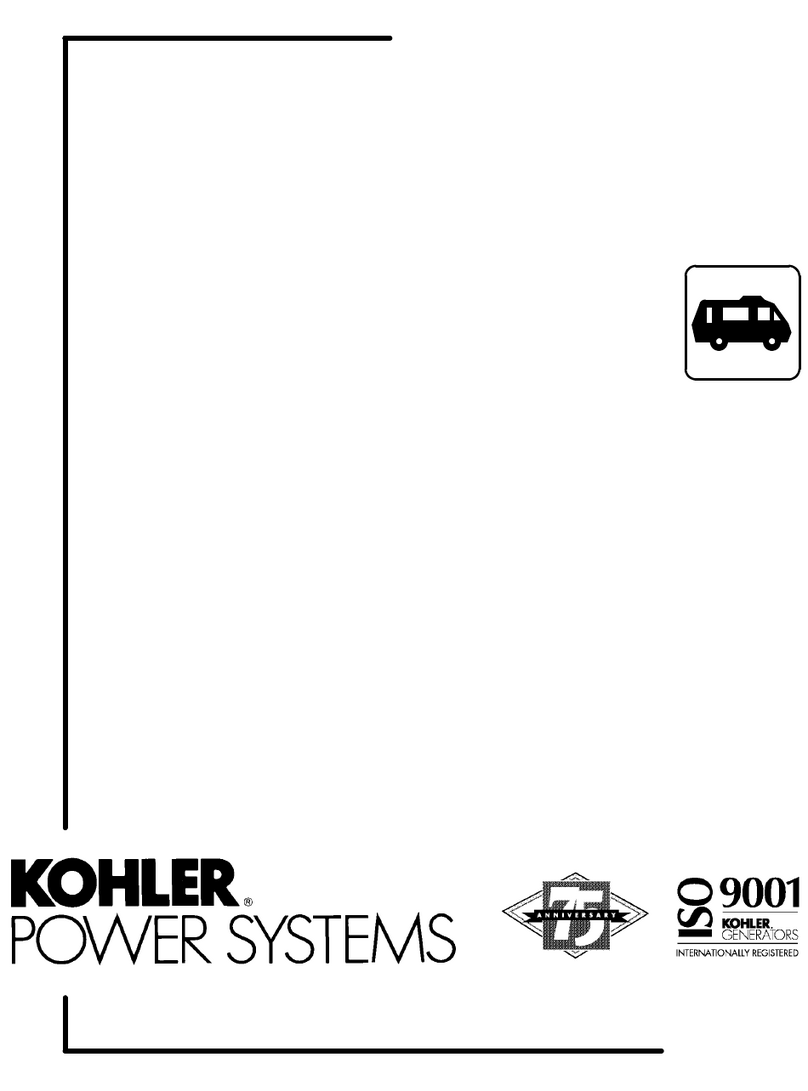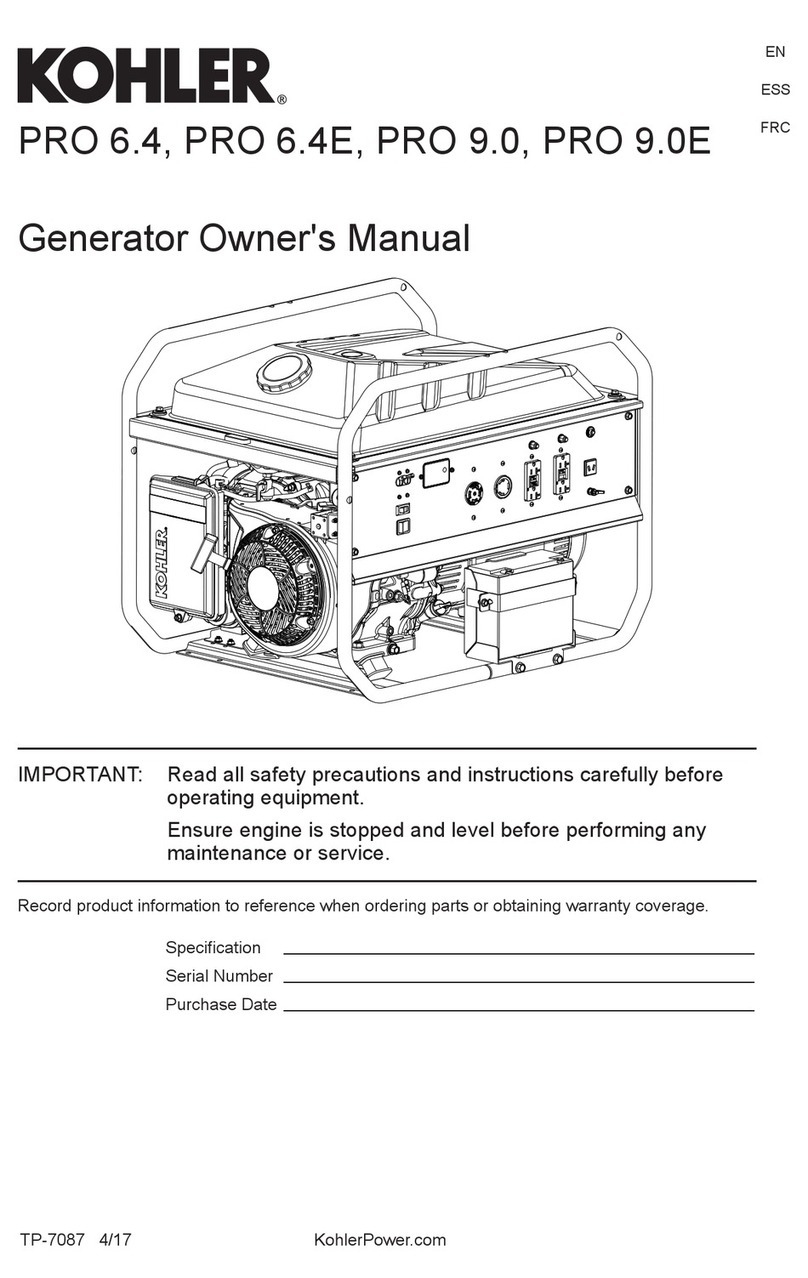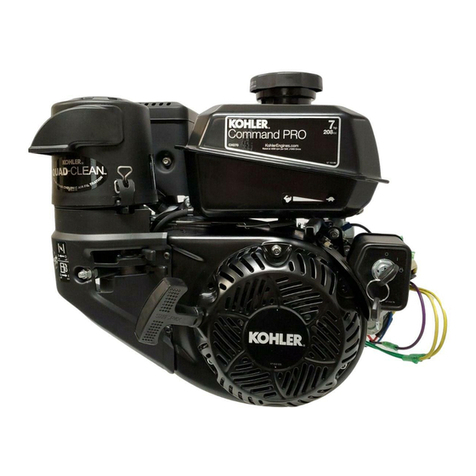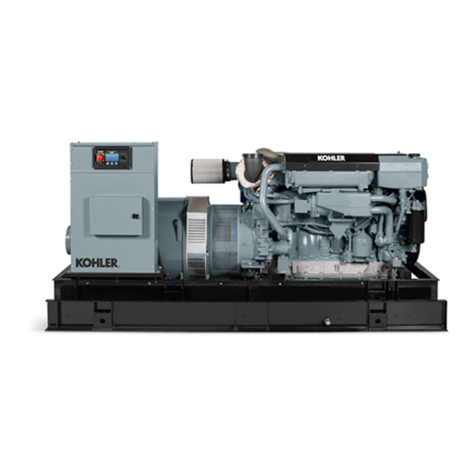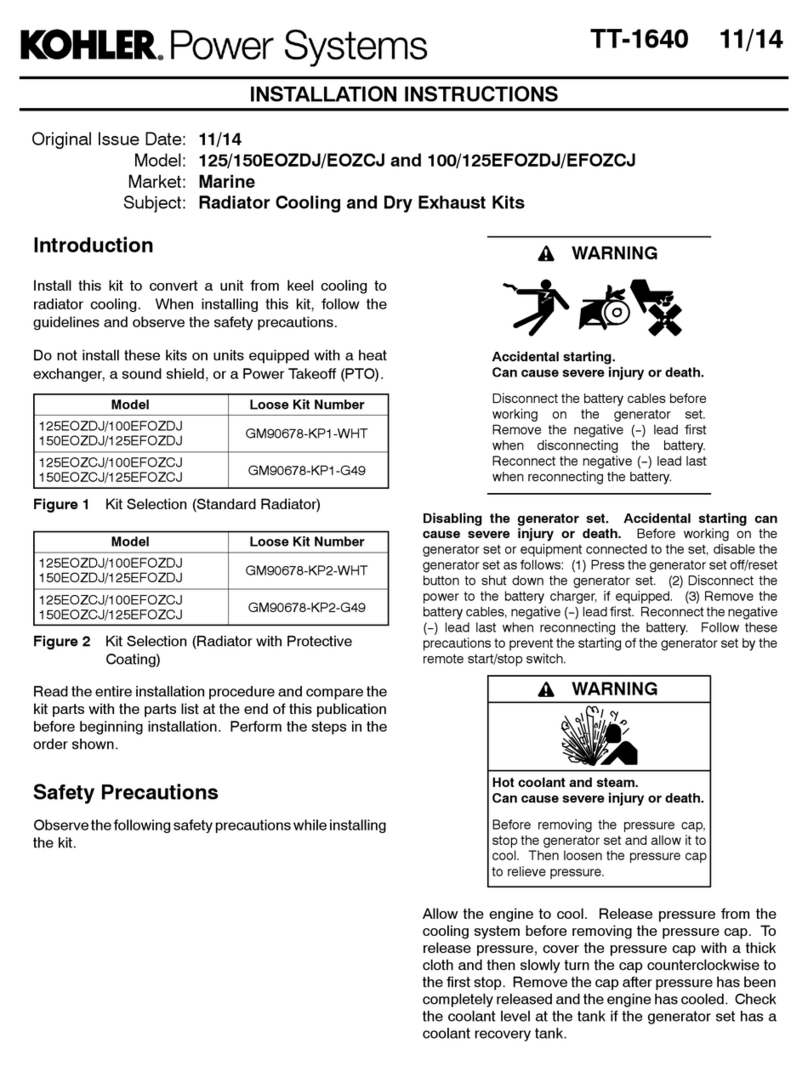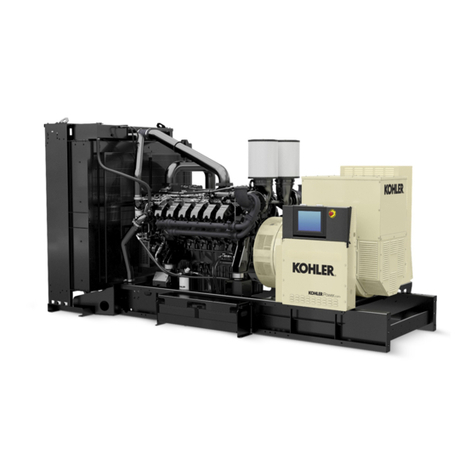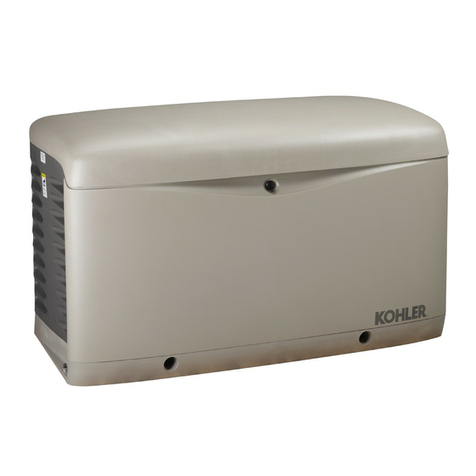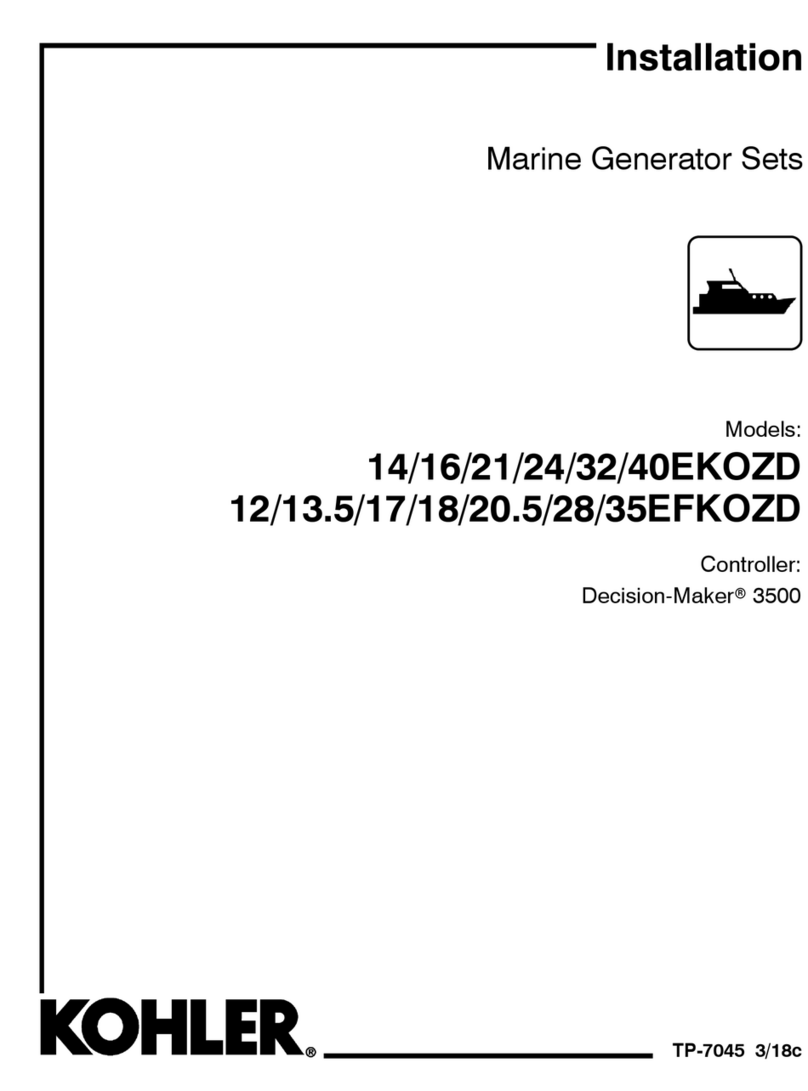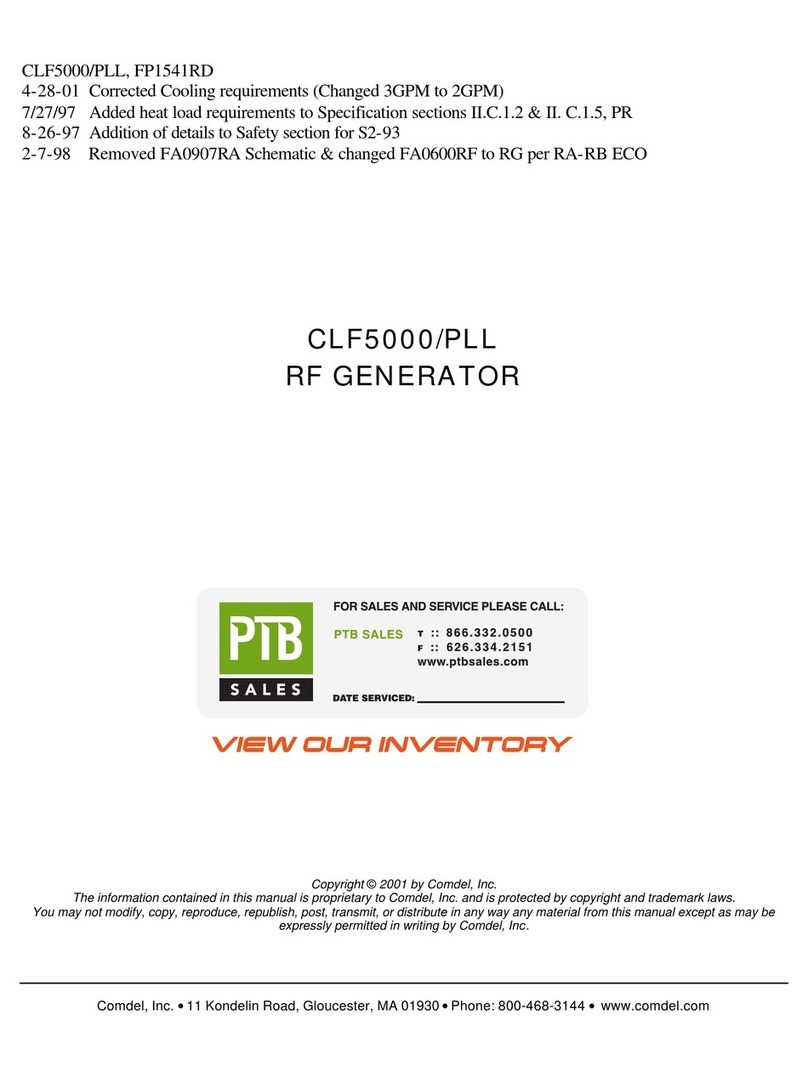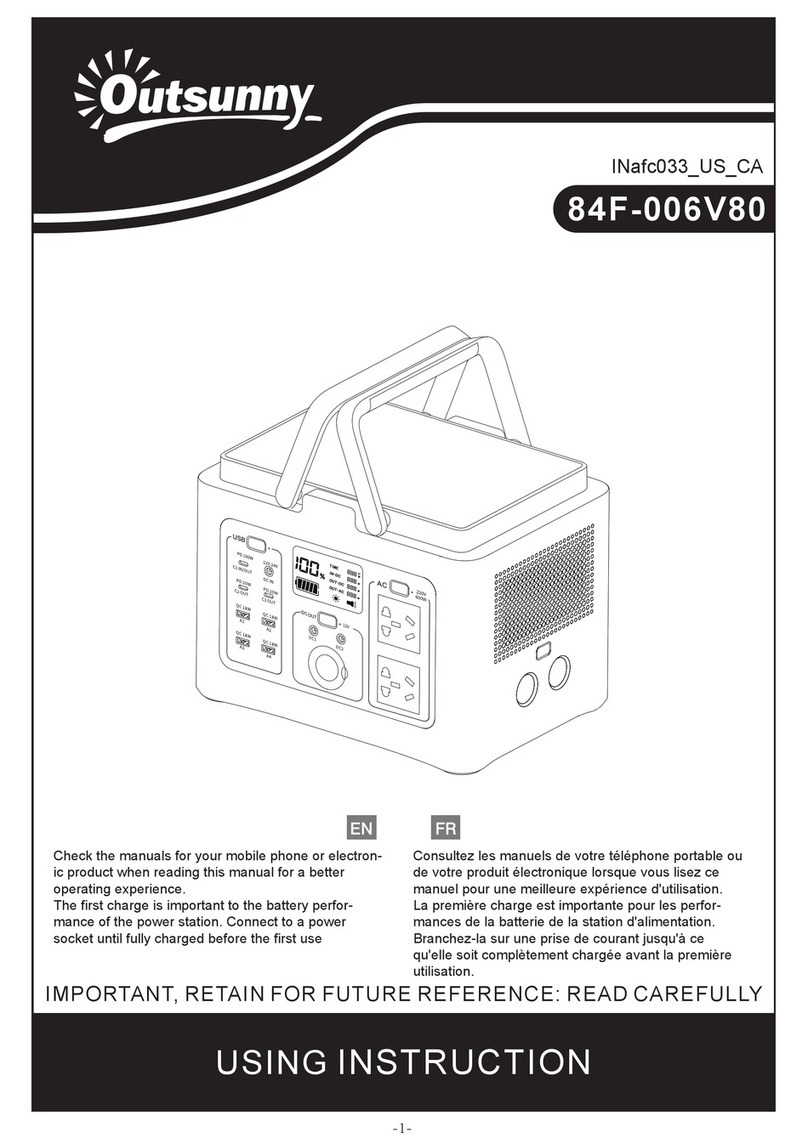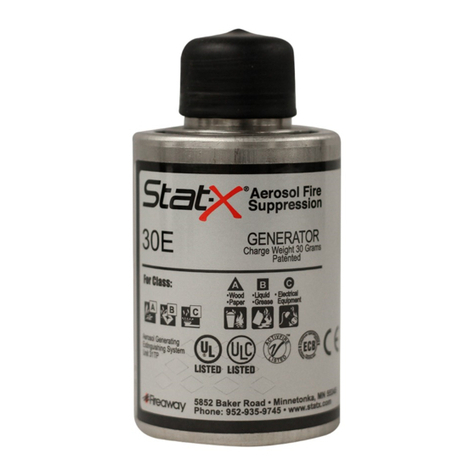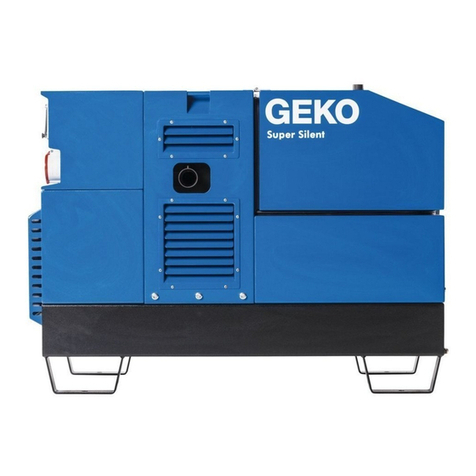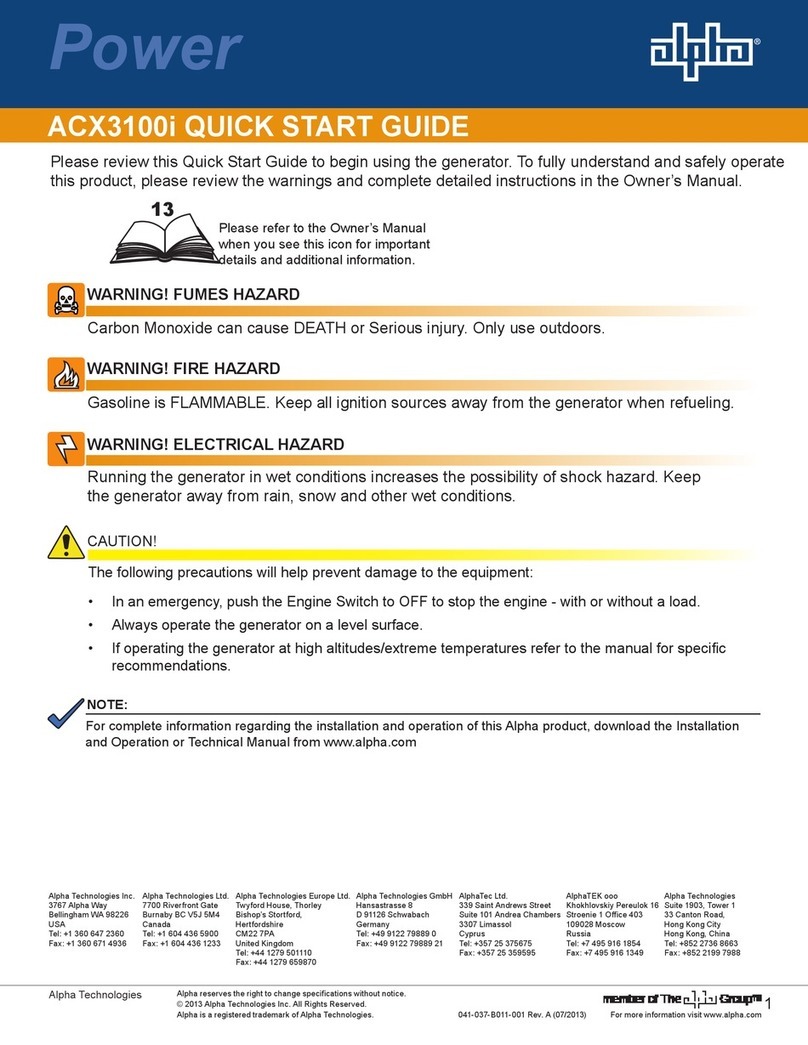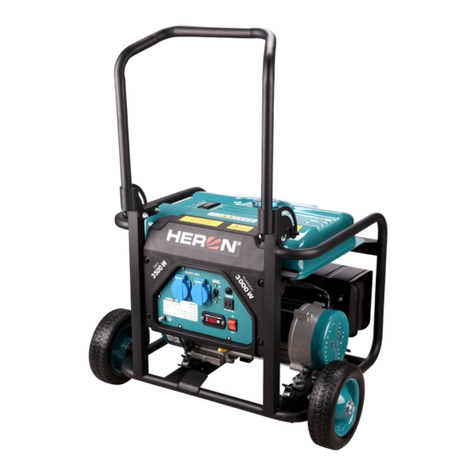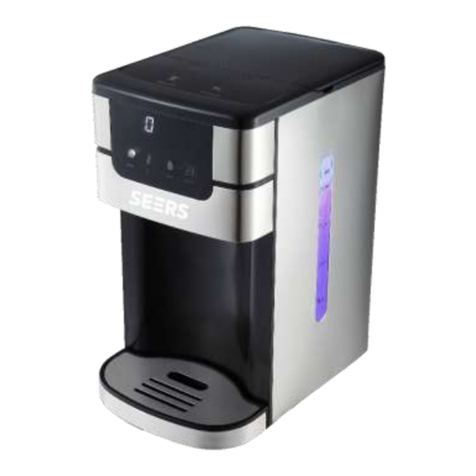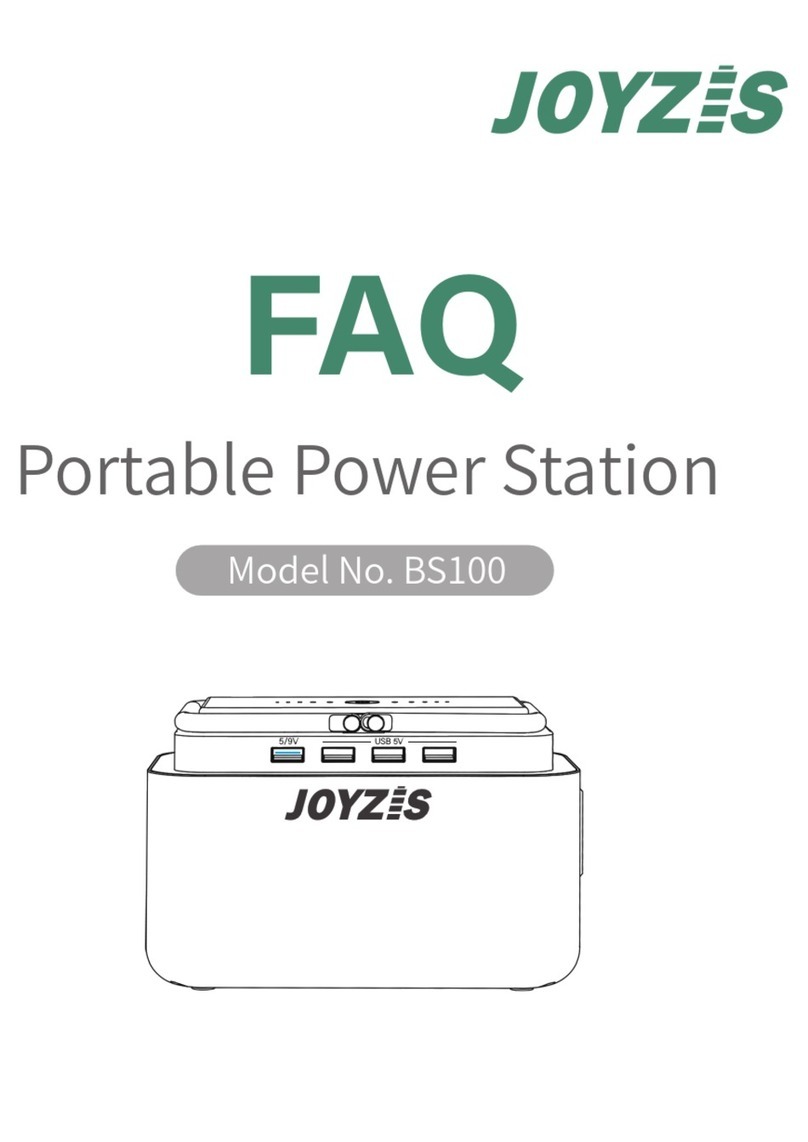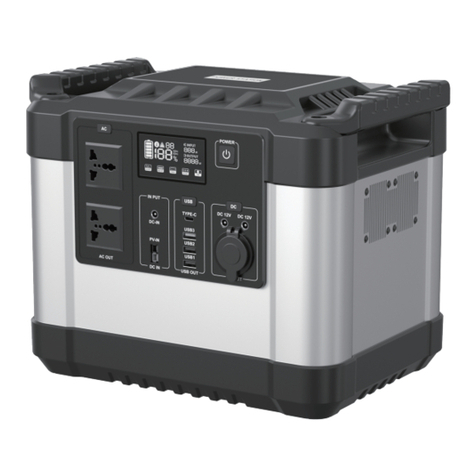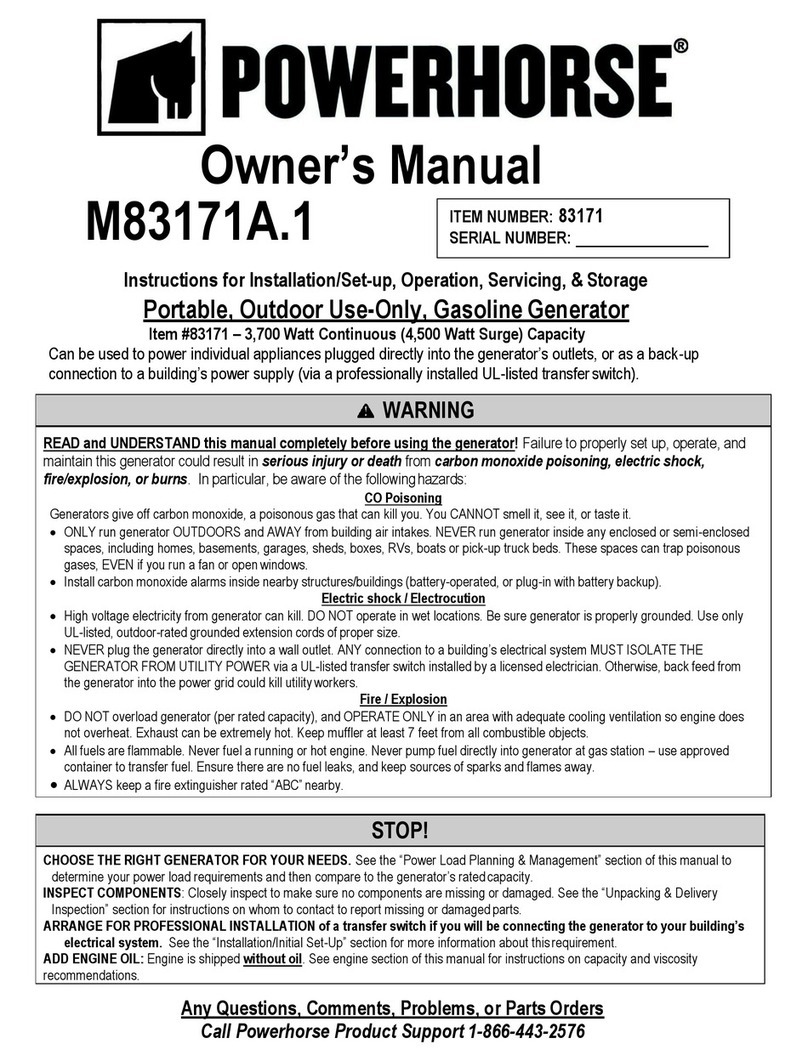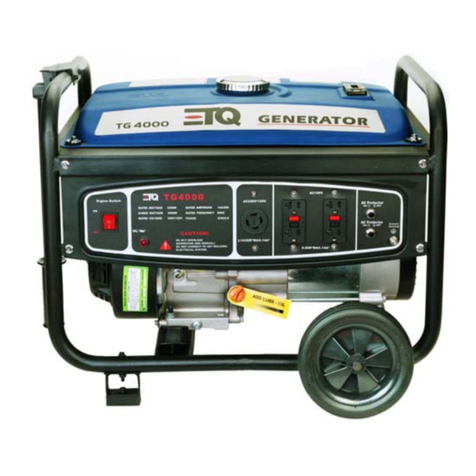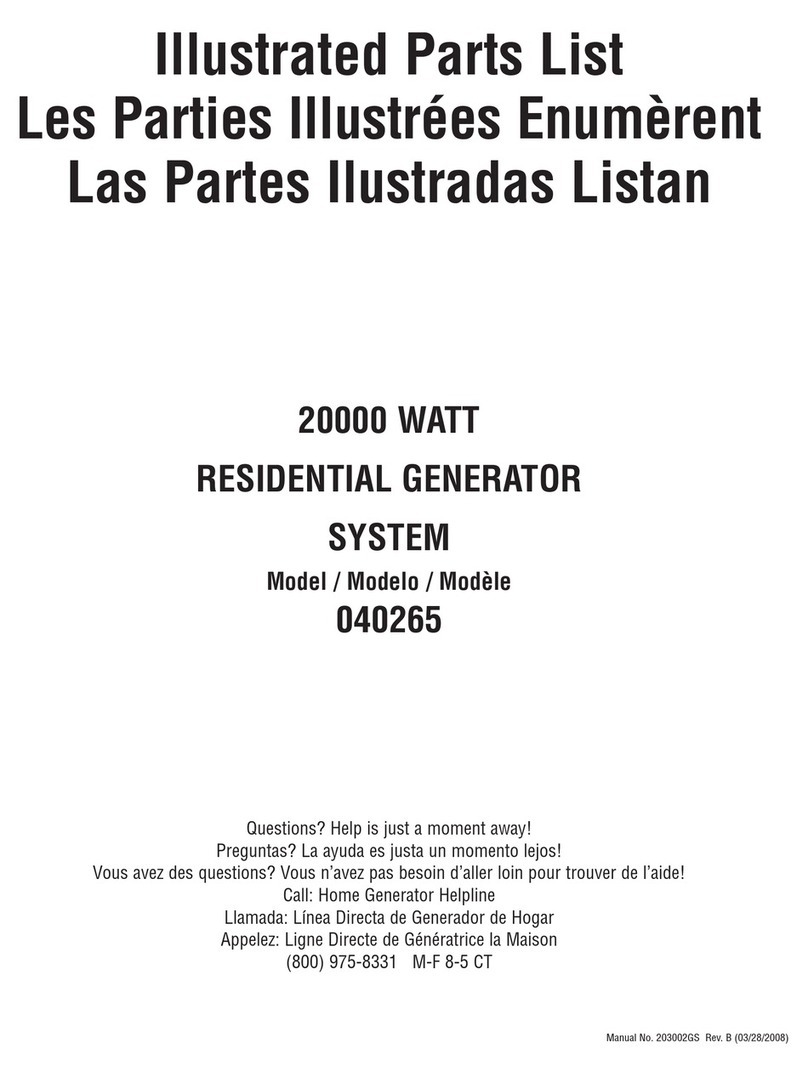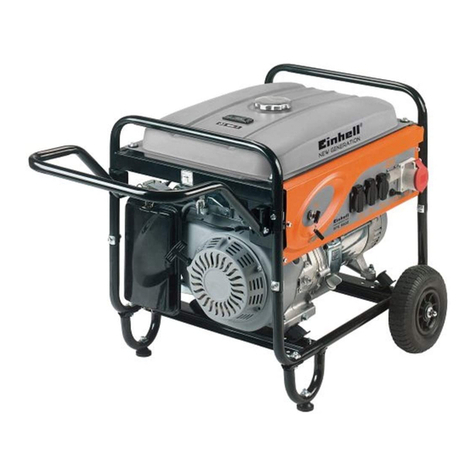
10 Safety Precautions and Instructions TP-6200 10/12
High voltage test. Hazardous
voltage can cause severe injury or
death. Follow the instructions of the
test equipment manufacturer when
performing high-voltage tests on the
rotor or stator. An improper test
procedure can damage equipment or
lead to generator set failure.
Testing the photo transistor circuit
board. Hazardous voltage can
cause severe injury or death. When
the end cover is removed, do not
expose the photo transistor circuit
board mounted on the generator set
end bracket to any external light
source, as exposure to light causes
high voltage. Keep foreign sources of
light away from the photo transistor
circuit board during testing. Place
black electrical tape over the LED on
the circuit board before starting the
generator set.
Installing the photo transistor
circuit board. Hazardous voltage
can cause severe injury or death.
Ensure that the foil side of the photo
transistor circuit board, the end of the
shaft, and the threaded holes are clean
and free of metal particles and chips.
Metal debris may short-circuit the
photo transistor circuit board and
cause hazardous voltage in the
generator set. Do not reconnect the
generator set to the load until the AC
voltmeter shows the correct output.
Installing the battery charger.
Hazardous voltage can cause
severe injury or death. An
ungrounded battery charger may
cause electrical shock. Connect the
battery charger enclosure to the
ground of a permanent wiring system.
As an alternative, install an equipment
grounding conductor with circuit
conductors and connect it to the
equipment grounding terminal or the
lead on the battery charger. Install the
battery charger as prescribed in the
equipment manual. Install the battery
charger in compliance with local codes
and ordinances.
Connecting the battery and the
battery charger. Hazardous voltage
can cause severe injury or death.
Reconnect the battery correctly,
positive to positive and negative to
negative, to avoid electrical shock and
damage to the battery charger and
battery(ies). Have a qualified
electrician install the battery(ies).
Servicing the day tank. Hazardous
voltage can cause severe injury or
death. Service the day tank electrical
control module (ECM) as prescribed in
the equipment manual. Disconnect the
power to the day tank before servicing.
Press the day tank ECM OFF
pushbutton to disconnect the power.
Notice that line voltage is still present
within the ECM when the POWER ON
light is lit. Ensure that the generator set
and day tank are electrically grounded.
Do not operate the day tank when
standing in water or on wet ground
because these conditions increase the
risk of electrocution.
Short circuits. Hazardous
voltage/current can cause severe
injury or death. Short circuits can
cause bodily injury and/or equipment
damage.Do not contact electrical
connections with tools or jewelry while
making adjustments or repairs.
Remove all jewelry before servicing
the equipment.
Engine block heater. Hazardous
voltage can cause severe injury or
death. The engine block heater can
cause electrical shock. Remove the
engine block heater plug from the
electrical outlet before working on the
block heater electrical connections.
Handling the capacitor. Hazardous
voltage can cause severe injury or
death. Electrical shock results from
touching the charged capacitor
terminals. Discharge the capacitor by
shorting the terminals together.
(Capacitor-excited models only)
Electrical backfeed to the utility.
Hazardous backfeed voltage can
cause severe injury or death. Install
a transfer switch in standby power
installations to prevent the connection
of standby and other sources of power.
Electrical backfeed into a utility
electrical system can cause severe
injury or death to utility personnel
working on power lines.
Testing live electrical circuits.
Hazardous voltage or current can
cause severe injury or death. Have
trained and qualified personnel take
diagnostic measurements of live
circuits. Use adequately rated test
equipment with electrically insulated
probes and follow the instructions of
the test equipment manufacturer when
performing voltage tests. Observe the
following precautions when performing
voltage tests: (1) Remove all jewelry.
(2) Stand on a dry, approved
electrically insulated mat. (3) Do not
touch the enclosure or components
inside the enclosure. (4) Be prepared
for the system to operate automatically.
(600 volts and under)
Airborne particles.
Can cause severe injury or
blindness.
Wear protective goggles and clothing
when using power tools, hand tools,
or compressed air.
WARNING
Servicing the generator set when it
is operating. Exposed moving parts
can cause severe injury or death.
Keep hands, feet, hair, clothing, and
test leads away from the belts and
pulleys when the generator set is
running. Replace guards, screens,
and covers before operating the
generator set.
Heavy Equipment
Unbalanced weight.
Improper lifting can cause severe
injury or death and equipment
damage.
Do not use lifting eyes.
Lift the generator set using lifting bars
inserted through the lifting holes on
the skid.
WARNING
